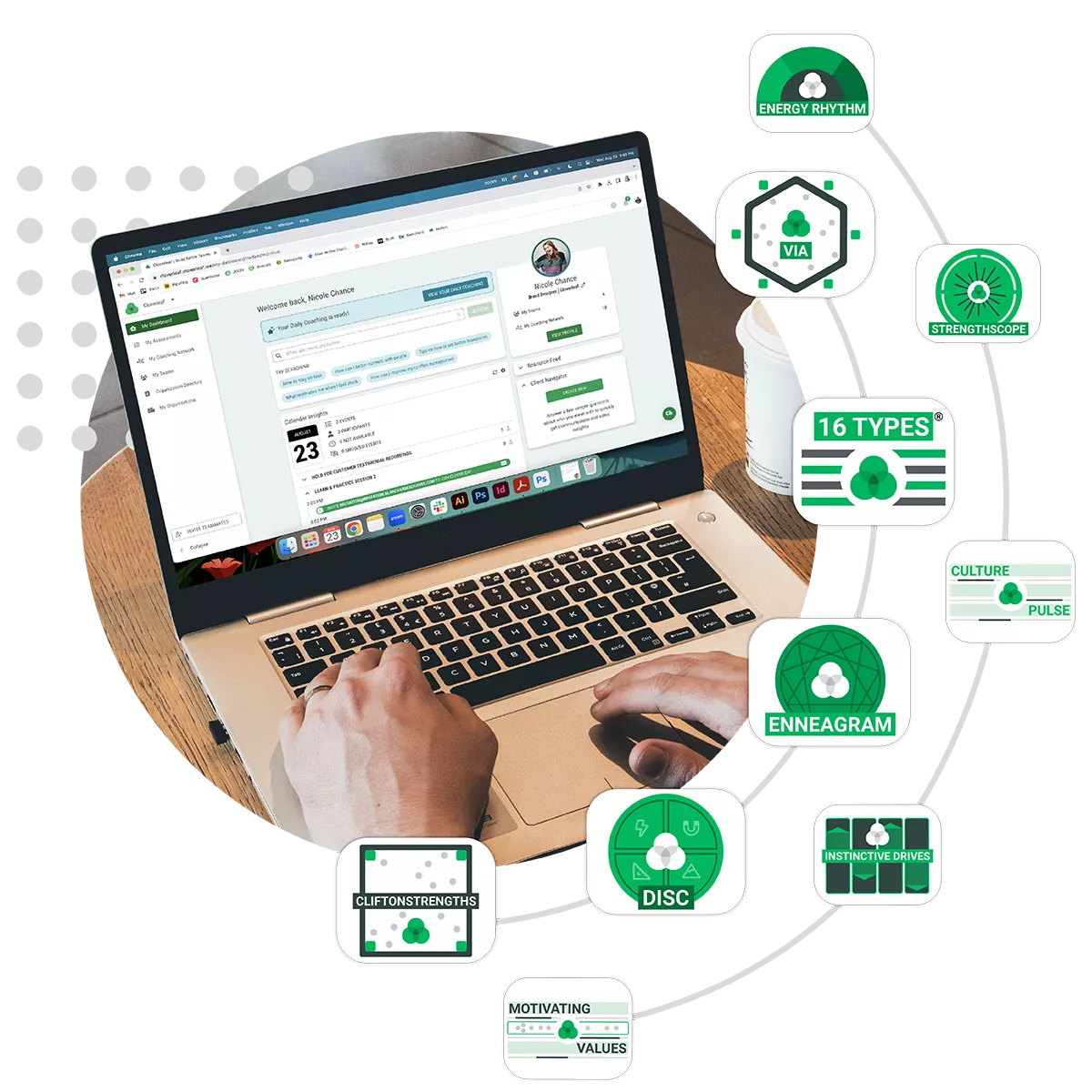Understanding the unique capabilities each employee brings to the table and the areas where they may require support is not just about filling gaps or enhancing performance. It’s about creating a dynamic and adaptable workforce that can meet the challenges of today’s fast-paced business environment.
When employees know their strengths, they can leverage them to contribute more effectively, increasing job satisfaction and productivity. Conversely, identifying and managing weaknesses can prevent potential pitfalls and enable a proactive approach to career development.
The essence of this article is to explore the nuanced art and science of discerning and developing diverse talents within a workforce. We will delve into strategies for identifying strengths at various stages of the employee lifecycle, the importance of addressing weaknesses constructively, and how to integrate this knowledge into robust development plans.

Evaluating Employee Performance: The Strengths vs. Weaknesses Debate
A pivotal question arises in talent management: Should leaders amplify employee strengths or dedicate efforts to remediate weaknesses? The debate is rich with varying perspectives, each backed by its own set of principles and outcomes.
The Reason For Developing Strengths
Advocates for a strengths-based approach, such as those posited by Gallup’s research, suggest that focusing on what team members naturally do best can lead to higher employee engagement, increased productivity, and greater profitability.
Dr. Donald O. Clifton’s work in positive psychology underpins this strategy, emphasizing that when individuals apply their core strengths, they are more likely to excel and remain motivated. For instance, a salesperson with a natural charisma may be encouraged to harness this trait to foster better client relationships, thus driving sales.
The Necessity Of Addressing Weaknesses
Conversely, proponents of developmental focus, drawing upon the work of renowned psychologist Carol Dweck, argue for the growth mindset’s potential to transform weaknesses into competence areas. The rationale is that neglecting weaknesses, especially those that hinder performance, can harm individual and team success. For example, a project manager struggling with time management could benefit from targeted skill development, as this weakness directly impacts their core responsibilities.
Applying A New Approach To Strengths And Weaknesses
The nuanced truth may lie in a blended approach that acknowledges the multifaceted nature of our development strategies. As Marcus Buckingham says, A strength is not what you are good at, and a weakness is not what you are bad at. A strength is an activity that strengthens you. It draws you in, makes time fly by while you’re doing it, and makes you feel strong.
Of course, we want people to leverage their strengths, but when developing their weaknesses or opportunities for growth would directly impact their role, performance, and career development, it only serves the individual, team, and organization to strengthen areas in need.
This perspective underscores the benefits and importance of aligning employee roles with their strengths while strategically developing weaknesses that limit their potential. It’s not about a binary choice between strengths or weaknesses but rather an awareness of both, ensuring that employees are positioned to excel while evolving in areas that contribute to their role’s demands and career trajectory.
Do we need to force a person to develop the ability to design great presentations when it’s not essential to their role or future within the company? Probably not. But it would serve them to improve their active listening, ability to give feedback or overall communication skills. Those interpersonal skills are role and function-agnostic.
The debate is not about choosing one approach; it’s more advantageous to foster a robust and adaptable workforce intentionally. Organizations can create a continuous growth and resilience culture by leveraging strengths and judiciously improving upon weaknesses when necessary.

Free Playbook For Creating An Engaging Employee Experience even During Challenging Times
- What The Future Workplace Looks Like
- How To Activate Emotional Intelligence Within Your Team
- Factors Of Employee Motivation
- Strategies For Employee Engagement
- A Hybrid Work Model For Collaboration, Flexibility, & Fulfillment
- The Power Of Coaching In The Workplace
- How To Reduce The Impact Of Labour Turnover

How To Identify Employee Strengths And Weaknesses
Understanding and leveraging employee strengths is a cornerstone of effective talent management. Strengths are more than tasks an employee excels at; they are activities that invigorate and inspire, leading to peak performance and job satisfaction.
4 Strategies for Uncovering Strengths:
1. Interview Process: Begin at the recruitment stage by asking candidates to articulate their strengths as they pertain to the role. Inquire how they’ve previously harnessed these strengths professionally, which can offer predictive insights into their future performance.
2. Onboarding Observations: The initial months of employment are telling. Observe which tasks new hires gravitate towards and excel in, and note any hesitancy or reluctance in other areas. This period is ideal for identifying natural aptitudes and potential areas for growth.
3. Ongoing Dialogue: Regular one-on-one meetings between managers and employees should be a platform for discussing strengths. Encourage employees to reflect on their successes and how they can apply their strengths to current and future projects.
4. Performance Reviews: Incorporate self-assessment in performance evaluations to prompt employees to consider their strengths critically. Goal setting should then align with these strengths, fostering a sense of achievement and progress.

The Role of Psychometric Assessment Tools:
Psychometric tools such as the 16 Type Indicator (MBTI), DISC, and CliftonStrengths® offer valuable insights into an employee’s strengths. These assessments can help increase self-awareness and guide personal development, ensuring each member’s strengths are fully utilized.
Cloverleaf takes the insights from traditional assessments and transforms them into actionable coaching. By integrating Cloverleaf’s insights into daily workflows, managers and employees can have more strategic conversations about performance and development, leading to a more engaged and productive workforce.
Recognizing Employee Weaknesses
In a professional context, weakness is an area where an employee may lack proficiency, impacting their performance or growth potential. Identifying these areas is not about highlighting shortcomings but about fostering an environment of continuous improvement.
3 Methods for Uncovering Areas for Development:
1. Candid Feedback: Create a culture where feedback is seen as a tool for growth. Encourage managers to provide candid feedback to help employees understand their development areas while supporting them.
2. Self-Assessment: Empower employees to self-reflect on their performance and identify areas they wish to improve. This self-directed approach to professional development can lead to more meaningful and personalized growth paths.
3. Integrate Coaching: Foster a coaching culture where leaders facilitate employee development, empowering individuals to identify and develop their strengths and address growth areas in alignment with organizational objectives.
Addressing weaknesses should be a supportive process that aligns with the employee’s career aspirations and the organization’s goals. Employees can approach their weaknesses as opportunities for growth and learning by focusing on development rather than deficiencies.

Harnessing Strengths and Addressing Growth Opportunities in Employee Development Plans
With a clear understanding of personal strengths and areas for growth, the next step is to integrate this insight into a cohesive development strategy. Organizations thrive when they establish systematic processes that recognize and harness individual strengths and constructively address and support growth opportunities.
Incorporating this dual focus into performance evaluations and career pathing plans is crucial. Such an approach ensures that development is not a one-size-fits-all program but a tailored journey that aligns with each individual’s unique capabilities and aspirations.
4 Ways Employees Can Advocate For Their Strengths and Development
Proactive communication and feedback are vital for individuals to leverage strengths and identify growth opportunities. Here’s how to effectively engage in this process:
1. Practice Good Communication: Discuss your key strengths with your manager, ensuring they know where you excel and how to utilize them. This transparency can help prevent burnout and lead to more fulfilling and suitable projects.
2. Be Self-Motivated: Actively seek out and express interest in projects that align with your strengths. Request that your manager keeps you in mind for upcoming opportunities that match your skill set, allowing you to contribute effectively and grow within the organization.
3. Welcome Feedback for Growth: When challenges arise, approach your manager for constructive feedback. Collaboratively set realistic and measurable improvement goals in areas causing stress or difficulty. This approach not only aids in personal development but also demonstrates your commitment to professional growth.
4. Integrate Continuous Learning: Take ownership of your development by seeking resources such as articles, books, and training sessions to sharpen your existing strengths and help you develop new skills. Attend conferences and engage in experiences that broaden your perspective and enhance your competencies.
9 Key Practices for Managers to Optimize Team Strengths
For leaders, the art of nurturing employee growth is both a responsibility and a privilege. Here’s a roadmap to best practices in this endeavor:
1. Utilize Development Frameworks: Engage with established performance and career development frameworks already available.
2. Integrate Development into Dialogues: Ensure that discussions of strengths and growth areas are a staple of one-on-one meetings. This consistent focus helps to personalize development plans and reinforces the importance of continuous improvement.
3. Celebrate Successes: Regularly recognize and celebrate achievements in both individual and team settings. This can boost morale and reinforce the behaviors and strengths contributing to a thriving workplace culture.
4. Foster Peer Recognition: Encourage a culture of appreciation by starting team meetings with “shout outs,” where team members can celebrate each other’s strengths and contributions.
5. Host Strengths Roundtables: Organize sessions where teammates share their strengths and how they can use them to promote teamwork.
6. Provide Timely, Constructive Feedback: Address areas for development promptly and constructively. Timely feedback prevents minor issues from becoming more significant problems and guides employees toward quality work.
7. Distribute Learning Resources: Share and promote access to resources, training, and learning opportunities.
8. Adopt a Coaching Mindset: When discussing areas for development, take a coaching approach by asking insightful questions that prompt self-reflection, adaptability, and emotional intelligence, such as:
- “What patterns have you noticed in this area?”
- “In what ways do you feel you need support here?”
- “What does success look like for you in overcoming this challenge?”
- “What step could you take to enhance your abilities here?”
By implementing these practices, leaders can create an environment that recognizes and utilizes employee strengths and compassionately and effectively addresses areas for growth, fostering a development culture.

S.R. Residence Hotel Phetchabun: Harnessing Employee Strengths for Enhanced Service Quality
In the heart of Thailand’s Phetchabun province, S.R. Residence Hotel faced a common industry challenge: maintaining exceptional service quality in a demanding work environment. The hotel’s management recognized that the key to sustaining high standards lay in the well-being and satisfaction of their staff. They embarked on a study to explore the impact of work-life balance strategies on service quality, focusing on leveraging employee strengths.
S.R. Residence Hotel introduced a series of work-life balance initiatives tailored to the strengths and needs of its workforce. These included flexible scheduling to accommodate personal commitments and health and wellness programs to ensure employees felt valued and supported. The hotel aimed to create a more dynamic and responsive service environment by focusing on its staff’s strengths.
The results were telling. The hotel markedly improved across all five service quality dimensions: tangibles, reliability, responsiveness, assurance, and empathy. Customer satisfaction scores soared, and employee feedback reflected a newfound sense of engagement and morale. The study directly correlated the strength-based work-life balance strategies and the elevated service quality.
The case of S.R. Residence Hotel illustrates the profound impact of aligning employee development with individual strengths and life needs. It underscores the importance of a supportive management team and a company culture that values personal growth and work-life balance. For organizations looking to replicate this success, the case study offers a blueprint: invest in your employees’ strengths, support their well-being, and watch as they, in turn, elevate your business.
Final Thoughts:
The journey to harnessing employee strengths and addressing weaknesses is instrumental to a thriving workplace. Embracing both aspects with a balanced strategy can revolutionize a work environment, enhancing individual and collective performance.
Acknowledging strengths ignites engagement and drives motivation, while tackling weaknesses head-on is indispensable for a holistic approach to development. Leaders are crucial in championing this dual approach, creating a supportive atmosphere that encourages growth and recognizes value.
By integrating platforms such as behavioral and strength-based assessments like Cloverleaf, organizations can gain deeper insights into their workforce, enabling them to effectively align individual strengths with the company’s goals.
In essence, the interplay of strengths and weaknesses within development strategies is not just a managerial task—it’s a leadership skill for fostering a resilient and adaptive organizational culture.



